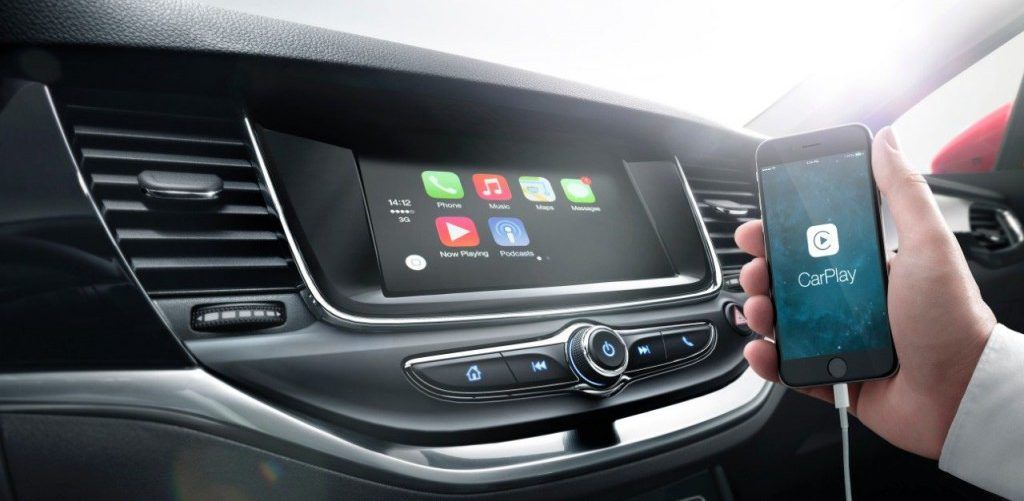
LOOK OUT! Apple CarPlay is on its way!
LOOK OUT! Apple CarPlay Has Almost Arrived … Your car used to simply take you from A to B, yet when it gets you home in the future it will be able to turn on your television, put the kettle on, and then download a raft of vehicle software updates while it’s parked in the garage overnight.
Anticipated for more than a year, Apple’s connected-car application, CarPlay, will finally start appearing in new cars. The in-dash software is designed to not only make calling simpler but also to work with specific car-oriented iPhone apps via a consistent, easy-to-follow interface with larger graphics and buttons. The promise is that it will allow iPhone owners to use the features they want in the car without creating dangerous distractions.
CarPlay will work with the iPhone 5 and later Apple phones. So that means the iPhone 5 and 5c, as well as the iPhone 5s, iPhone 6 and 6 Plus. CarPlay also works with the new iPhone 6s and iPhone 6s Plus.
A wide variety of luxury and budget vehicles will eventually have the CarPlay app. First out of the gate in 2015 are Ferrari, Mercedes-Benz and Volvo. Ford is also demonstrating models with the software, such as the current Mustang. Starting with 2016 models, Buick’s Regal and LaCrosse will ship with CarPlay, eventually rolling out to the rest of Buick’s fleet over the following 36 months. GM also announced that the 2016 Canyon, Sierra and Yukon will feature CarPlay via its 8-inch IntelliLink infotainment system.
Virtually every automaker has said they’ll work with Apple, but precisely when specific models from other manufacturers will appear remains to be seen.
While the CarPlay app will look the same on the screens of all vehicles, how you use it will depend on what controls, buttons, knobs and touch screens the automaker favours in its designs. Some will rely mostly on touch-screen controls, others mainly on physical buttons.
This is just one example of how the role of the car will evolve through the rapid expansion of connectivity – and among the future trends being forecast by a group of Holden employees. Holden’s Product Planner & Head of Infotainment & Technology, Andriana Mantzouranis, is one of the crystal-ball-gazers helping to ensure Holdens are future-proofed for decades, not just years, ahead.
Even Andriana doesn’t have to look far to appreciate there’s been a recent and dramatic fusion of the automotive and technology industries, as the motor vehicle becomes as much about mobile personalisation as personal mobility.
Tech behemoths Apple and Google, for instance, are key to the new ‘phone projection’ trend, where their respective CarPlay and Android Auto are transforming a car’s incumbent infotainment system into a display that (partially) replicates the iPhone iOS or Android Lollipop interfaces. They will feature on future Holdens, including the all-new Astra due in late 2016.
“Apple and Google have been game-changers in terms of how the automotive industry has had to react,” says Andriana. “You can get into a car now, and your phone messages, music and apps will all be linked – and you won’t have to download them again. It’s not going to be a wow feature – it’s going to be a customer expectation of a vehicle regardless of price.”
This presents a challenge to car makers to find ways of creating and extending technological features for those considering more expensive cars – higher price points come with higher expectations.
Embedded connectivity – such as in-car wifi – has already made its way into some luxury cars, and will become an increasingly important offering. Andriana says another factor will be giving customers the ability to extend their wireless connections to interact with other products they have – including tablets and wearable technology. “Navigation systems, for example, will become incredibly high-tech. You will be able to transfer your map from your car to your phone or smartwatch, so you won’t get lost in instances where you have to walk part of the way to your destination. “The idea is to seamlessly integrate a vehicle into the customer’s lifestyle. Eventually we’ll come to a time where a customer’s car will be connected to their home.”
Vehicle-to-infrastructure technology, and the related vehicle-to-vehicle communication technology, is more than a decade away from becoming widespread reality, though even shorter-term advances in connectivity capabilities will vary geographically – even between developed nations.
Australia may have one of the highest rates of smartphone usage per capita in the world, but as a nation we are also generally wary of excessive technology in cars, due to both security concerns – highlighted this year by the car-hacking episode in the United States – and the potential for driver distraction. “It means we can’t just put any technology in the car; there has to be a level of scrutiny,” says Andriana.
Connectivity options locally will increase as the nation’s broadband network becomes stronger and faster, and unlimited mobile data plans become more prevalent. Holden will certainly be looking for opportunities to find competitive advantages in the field of technology.
“Holden has to stand out – especially in the Australian market because it’s one of the most competitive,” says Andriana. “And this is a space where you can be a leader and you can be innovative. I think we’ve done an amazing job with our MyLink infotainment system, and we’re always trying to make sure we’re at the front of the pack.”